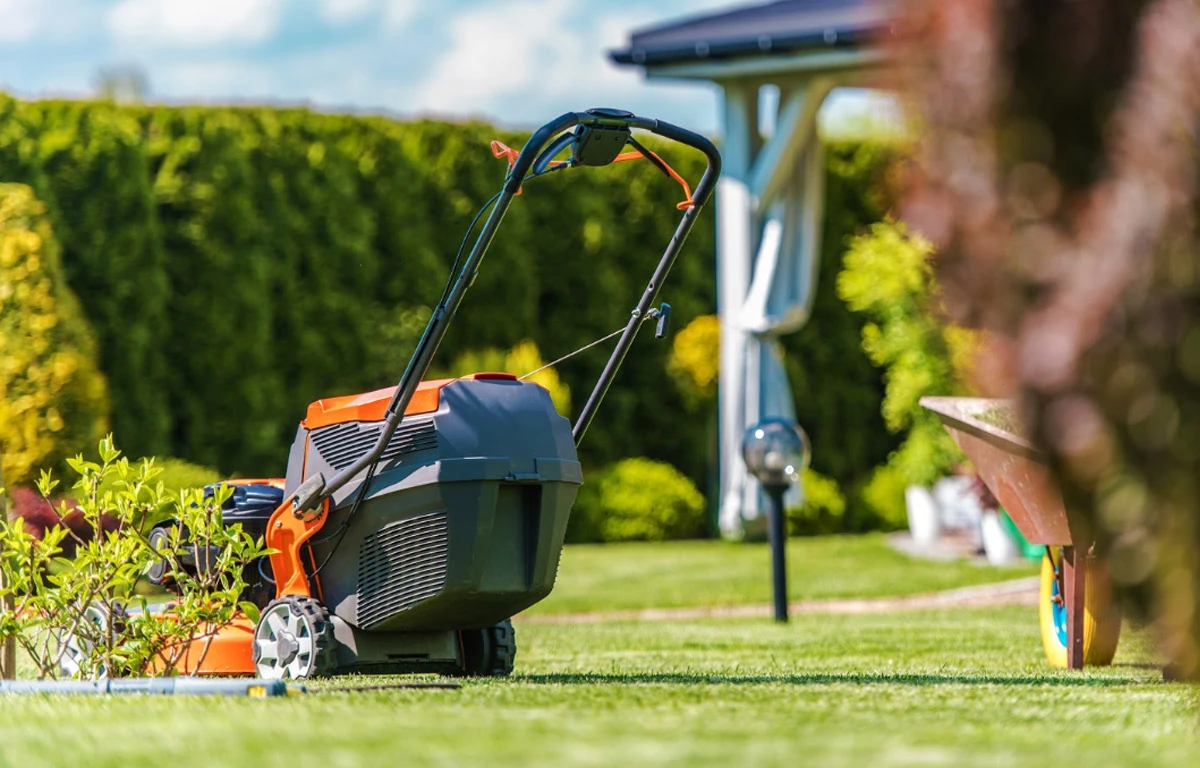How to Maintain a Healthy Lawn
April 6, 2020

Although grass seems like one of the simplest parts of landscaping, it can actually be one of the trickiest.
Having green, beautiful grass is more than simply watering it and pulling the occasional pesky weed. While nobody wants to have a yard full of clovers or dandelions, it can be difficult to get rid of persistent weeds and unmanageable brown spots.
At Turf Pro Landscaping, we don’t think that beautiful lawns should be reserved for championship golf courses and pristine parks. Instead, we aim to help all of our clients get the bright green, weed free lawn that they’ve been dreaming of.
By following these simple 5 steps, you can end up with the greenest, healthiest lawn on the block:
Tip 1: Adust Your Cutting Height
Unbeknownst to most, blade height is crucial when cutting your lawn.
When adjusting your blade height, it is important that you remember to measure your blade from a hard surface to the bottom of the mower deck, then add 1/4 inches.
Cool-climate grasses require a 1-1/2 inch cutting height during your first mow of the year. This helps to remove dead grass and allows more sunlight to reach the crown areas of the grass plants. During the summertime, raise your blade two inches or more. On your last fall cut, lower the blade to 1-1/2 inches.
For warmer climate grasses, these heights will be ½ inches lower than the cool-climate grasses. In Canada, our grass can typically be classified as cool climate grass.
Tip 2: Sharpen Mower Blade
A dull knife or pair of scissors never did anyone any good — and the same thing goes for mower blades.
In order to cut grass both cleanly and evenly, a maintained, sharp and balanced blade is required. When your blade is unbalanced, it can damage your lawn mower’s bearings – which can be extremely costly. It is recommended to sharpen and balance your blade three times a year in order to maintain a good cutting edge.
Tip 3: Soak Your Grass
Grass needs water — and a lot of it.
Lawns require 1 to 2 inches of water per week in order to remain healthy. However, this varies drastically depending on the surrounding temperature, type of grass, soil conditions and how much water it receives on a weekly basis from rain.
When your lawn becomes dull, wilted and discoloured, it needs to be watered. The general rule of thumb is to water the grass until the soil is wet 4 to 5 inches down. Wait until the water has absorbed before repeating.
Don’t forget: It is best to water your lawn early in the morning rather than at night.
Tip 4: Time Your Fertilizers
Timing is key when it comes to fertilizers and weed killers.
When spring approaches, attack weeds before they develop deep root systems and recurring growth.
Fertilize your grass in early spring to help kick-start root development.
Fall allows summer damage to repair and helps spur the growth of the root even after top growth stops, helping the longevity of your grass during the winter.
Tip 5: Aerate
In order for grass to grow, the roots need oxygen. Known as aerating, you can remove small plugs of soil in your grass that helps your lawn breathe and absorb the oxygen, water and nutrients it needs to grow healthy.
Aerating your lawn provides room for grass roots to grow, reproduce and ultimately absorb the essentials needed.
Having a compacting long makes it difficult for the grass to absorb air, water and nutrients.
If you follow these five simple steps, we guarantee that you will notice substantial improvements in the quality, colour, and texture of your grass. If you need a little bit of additional support, feel free to contact your friends at Turf Pro Landscaping.